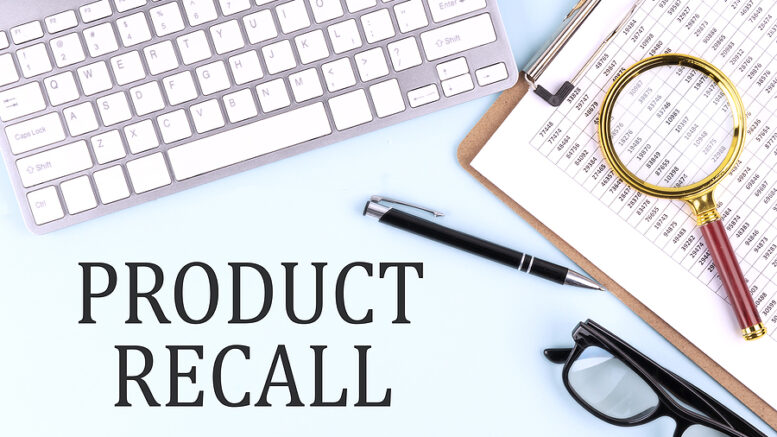“With this comprehensive blueprint for the recall management process, the program is now ready to be implemented on the strong foundation of leadership, organizational culture, and structure.”
Building upon the foundation that we laid in my previous article, let’s now discuss the blueprint for the program that rests on that foundation. Like all successful and sustainable projects, there must be a setting of guiding principles and policies that delineate the roles and responsibilities of those involved, as well as outlining a systematic, repeatable process by which success can be measured. Having a documented process with accompanying policies also addresses requirements of accrediting agencies, such as the DNV and TJC. Their standards call for every organization to have a process to respond to product recalls and notices, with corresponding documentation to demonstrate compliance with that process and related policies.
In the last article, the importance of having a strong foundation for a recall management program was reviewed. It began by defining the key core elements: leadership and ownership. This should be the first part of the organization’s policy around recall management. The leadership/ownership structure should be defined, along with the roles and functions around management, oversight, and escalation. All necessary job titles/positions that are part of the program should be named and if they are permanent or ad hoc members of this process. If there are any additional groups, such as the Safety Alert Response Team, mentioned in the last article, the roles and functions of this team should be addressed.
The next essential component of the policy is an outline of the process that is to be followed – how will product notices or recalls be handled? Is the program centralized or decentralized? (see previous article) How will alerts be evaluated and prioritized and by whom? More specifically, these process steps need to be defined:
- How alerts/notices may be received, including the role of any third-party vendors
- The person/role who is designated to receive and “triage” the alerts
- The process used to prioritize and address alerts based on the type/level of the alert
- Product recalls (Class 1-3)
- Field corrections/notices
- Notification process/communication plan to end users, supply chain, and other key stakeholders
- The protocol to address a product notice/recall once it is received
- Who will identify if the product has been purchased and is in use/in stock and affected locations within the organization; how will this be accomplished
- Who will perform remediation-collection, removal or correction of product, as indicated by supplier
- Who is responsible for the coordination of all actions taken and monitor the process
- How will closure/response back to supplier be handled
- How an issue can be escalated should a problem be encountered
- Internal response time for each class of recall, i.e., Class 1< 24 hours, Class 2&3 within 3-5 days
- Any process to address internally identified product failures (“internal recalls”)
A policy must also provide for the evaluation of consistency, sustainability, and compliance to the established process. It should accomplish this by addressing 3 additional areas. First, there needs to be a defined mechanism for the documentation of the process and all actions taken, ideally in a central repository. Whether it is a home-grown solution, or a third party offering, the process must be fully documented, from intake of the alert through completed actions/resolution, with the responsible party clearly indicated in the data. This information can serve as evidence to an accrediting organization that a process is in place and is being utilized in compliance with the policy. This data can also be used to create reports for all necessary leadership committees within the organization, as directed by the policy.
This documentation will also go a long way in supporting the next key element in the policy – compliance auditing. To ensure that the process is effective and efficient, auditing must be done at regular intervals. Auditing should be prescribed in terms of compliance to the policy and any performance metrics, and the metrics should be clearly defined and quantifiable. Some sample metrics would be:
- Response time to completion, at the organization and/or department level
- Completion rate
- Number of alerts received, % requiring action, % with potential to cause harm/affect delivery of patient care, number unresolved
- Number of products destroyed, returned, replaced, corrected
- Feedback on the process
A corrective action process should also be outlined, including documentation of the review, remediation actions taken, and the effectiveness of those actions at correcting the problem.
The final, but no less important, component of the policy should address employee training on both the policy and the process. This should include the new employee training, periodic refresher training of current employees or those identified during the auditing process, as well as additional training for those directly involved in the recall management process.
With this comprehensive blueprint for the recall management process, the program is now ready to be implemented on the strong foundation of leadership, organizational culture, and structure already discussed. In the next installment, we will review tools that are available to help during the implementation phase and keep things running smoothly as you continue to build out the program.
Article by Tracey Chadwell
Tracey Chadwell has 30 years of clinical and supply chain experience driving clinical and operational performance improvement, demonstrating significant returns on investment through clinical utilization management of resources and operational cost savings. Her experience covers aspects of supply chain including data analytics, operational efficiencies, internal and external customer relations, GPOs and contracting, and consulting in these areas. Her experience in value analysis includes leading a program, developing or refining existing programs, and implementing millions of dollars in savings through various healthcare organizations. This included operational and clinical process improvement programs which contributed to cost savings in both labor and non-labor expenses.
This year, Tracey started her own consulting enterprise, TACH Consulting. Prior to joining that, she worked as a senior director of the clinical advisory specialists for Intalere, serving as an SME and trusted advisor to their members, as well as providing consulting services in supply chain and value analysis. In addition to her 10 plus years as a bedside nurse and manager, she has also worked as a consultant for value analysis and service-line analytics for two large GPOs.
Tracey has also been active with state healthcare organizations in all classes of trade, providing educational presentations and advisory services. She has appeared on several podcasts, such as Power Supply and The ASC Podcast as well as several industry blogs. She is a member of the Association for Healthcare Resource and Materials Management (AHRMM) and the Association of Value Analysis Professionals (AHVAP).
Articles you may like:
Laying a Strong Foundation for Your Recall Management Program
When It Comes to Recalls, What You Don’t Know Can Hurt You – and Your Patients, Too!





